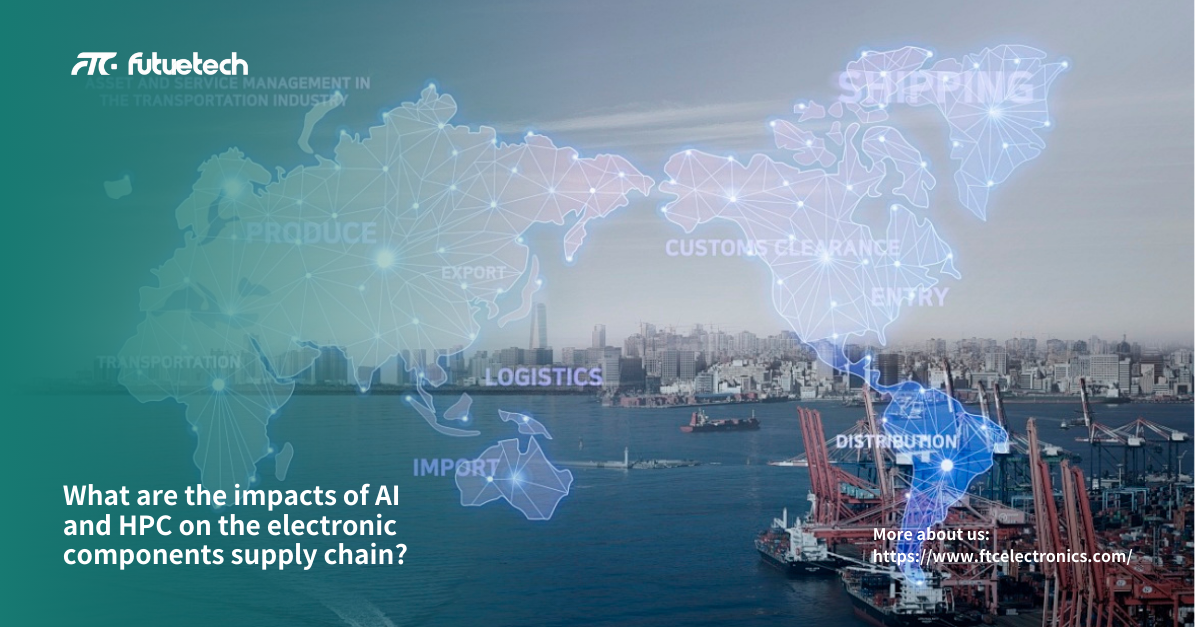1. How the Rise of AI & HPC Is Affecting the Semiconductor Supply Chain
In recent years, the rapid advancement of artificial intelligence (AI) and high-performance computing (HPC) has been reshaping the global electronic components market. The surging demand for AI servers, GPUs, and cloud computing has further driven the demand for semiconductor components. However, this rapid growth has also introduced unprecedented supply chain challenges, including shortages of key components, structural adjustments in the supply chain, and shifts in market competition. This article explores how the AI and HPC industries impact the electronic components supply chain and analyzes the supply and demand trends of critical components.
1.1 Explosive Growth in AI Servers and GPUs
The AI server market is expanding rapidly. According to market research firms, the global AI server market is expected to reach tens of billions of dollars by 2024, with its share in the overall server market steadily increasing. AI servers are primarily composed of GPUs, FPGAs (Field-Programmable Gate Arrays), and specialized accelerators. The soaring demand for these components has created new opportunities for the semiconductor industry.
GPUs, in particular, play a crucial role in AI training and inference tasks. Due to the massive data requirements of AI training, high-performance GPUs from companies like NVIDIA (such as H100 and A100) remain in short supply, further exacerbating the semiconductor supply chain’s strain.
1.2 Increasing Demand for Cloud Computing and High-Bandwidth Memory (HBM)
Beyond GPUs, the expansion of cloud computing and HPC applications has increased demand for high-bandwidth memory (HBM). HBM is a high-performance memory integrated into GPUs and AI accelerators, offering higher bandwidth and lower power consumption. Since AI training involves vast data exchange, HBM has become a critical component. However, the complex manufacturing process of HBM has limited supply to just three major manufacturers—SK Hynix, Samsung, and Micron. Production capacity has struggled to keep up with market demand, leading to continuous price increases. In 2023, the average price of HBM surged by over 500%, and shortages are expected to persist in 2024.
1.3 Growing Importance of Low-Power Power Management ICs
AI servers consume 6-8 times more power than standard servers, leading to a rising demand for low-power power management ICs (PMICs). The high power consumption of AI chips necessitates efficient power management to optimize energy use and reduce heat generation. High-efficiency PMICs can help lower overall AI server power consumption while improving system stability and performance. However, the supply of high-performance PMICs is limited, as the market is dominated by a few key suppliers such as Texas Instruments (TI), onsemi, and Infineon, resulting in a supply-demand imbalance.
2. Supply Chain Challenges for Key Components
2.1 Limited Advanced Process Node Capacity Affecting High-End Chip Supply
The semiconductor industry is currently facing constraints in advanced process node capacity. AI chips, GPUs, and FPGAs often require 5nm or smaller process technologies, which are primarily manufactured by a few foundries such as TSMC, Samsung, and Intel. As AI demand surges, these manufacturers’ production capacities have been largely pre-booked, making it difficult for many smaller chip design companies to secure sufficient foundry support.
2.2 Geopolitical Risks and Supply Chain Uncertainty
The semiconductor supply chain is highly globalized, making it vulnerable to geopolitical influences. In recent years, U.S. restrictions on China’s semiconductor industry have disrupted the supply of high-end chips, such as AI GPUs and FPGAs, forcing companies to seek alternatives, including developing domestic chips or restructuring their supply chains. Additionally, the supply of critical semiconductor materials—such as rare earth elements, gallium nitride (GaN), and silicon carbide (SiC)—is affected by international trade policies, further adding to supply chain uncertainty.
2.3 AI-Driven Market Segmentation Reshaping Demand Structure
With the continued growth of AI and HPC applications, the demand for electronic components is undergoing structural changes:
● High-end Market: Demand for AI servers, GPUs, and HBM is skyrocketing, prompting companies to invest heavily. For example, NVIDIA has partnered with TSMC to expand high-end GPU production, while HBM suppliers like SK Hynix are ramping up capacity to meet demand.
● Mid-to-Low-End Market: The traditional computing market, including PCs and general-purpose servers, is slowing down. Demand for certain components, such as DDR4 memory and standard power management ICs, is stabilizing or even declining.
● Rise of Alternative Products: To reduce reliance on specific suppliers, some companies are turning to alternative solutions like FPGAs and ASICs (Application-Specific Integrated Circuits) to meet specialized application needs.
Conclusion
The rapid development of AI and HPC is profoundly impacting the electronic components supply chain. The surging demand for key components such as GPUs, HBM, and PMICs is tightening supply and driving structural market changes. To navigate these challenges, businesses must adopt more flexible supply chain management strategies, secure key component supply, and leverage technological innovation to remain competitive. In the coming years, the continued expansion of AI and HPC will further drive the electronic components market’s growth, bringing both new opportunities and challenges to the industry.

